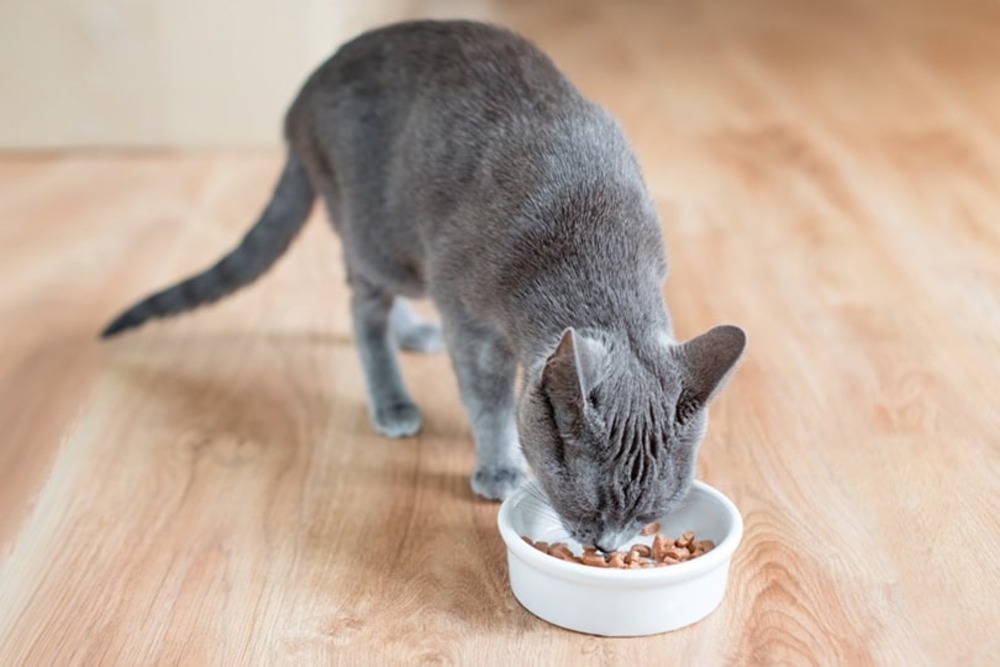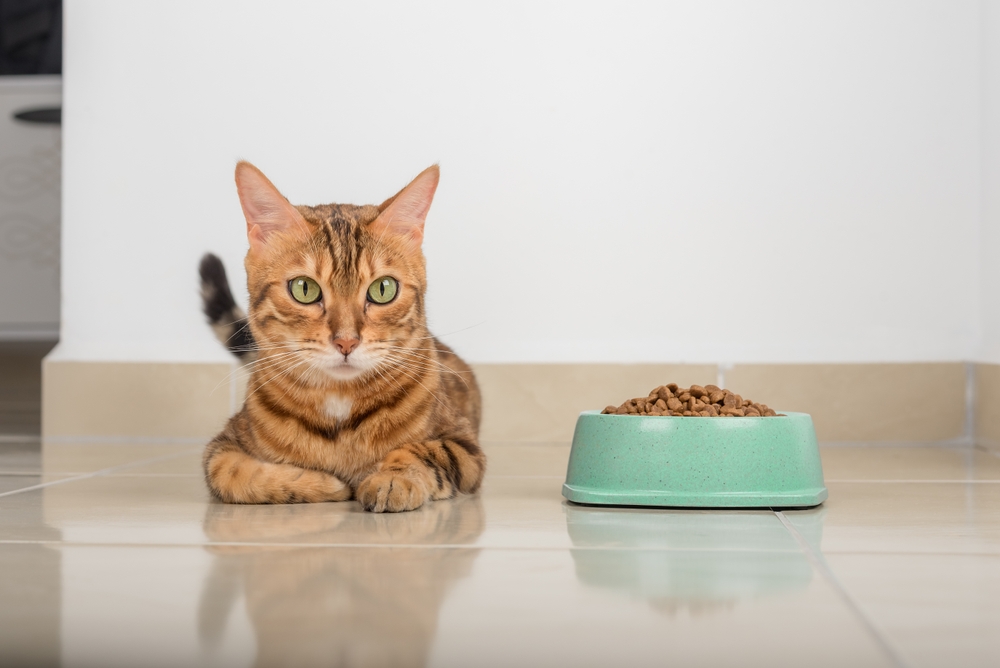The post How Many Calories Should a Cat Eat? Vet-Reviewed Cat Feeding Guide by Catster Editorial Team appeared first on Catster. Copying over entire articles infringes on copyright laws. You may not be aware of it, but all of these articles were assigned, contracted and paid for, so they aren't considered public domain. However, we appreciate that you like the article and would love it if you continued sharing just the first paragraph of an article, then linking out to the rest of the piece on Catster.com.
Click to Skip Ahead
All cats have individual dietary needs based on their breed, size, age, and health conditions. As notoriously picky eaters, finding the right food for them is only half the battle. Feeding your cats the appropriate amount is a crucial aspect of their diet. Obesity in cats comes with a long list of severe health problems, so keeping their weight in check with appropriate food portions is key to keeping them at a healthy weight long term. In general, an average indoor cat should have about 20 calories of food for every pound of body weight.

How Many Calories Do Cats Need?
While every feline is different, there are a few general guidelines for an indoor cat’s calorie consumption. Veterinarians use calculations that are based on your cats’ resting energy requirements (RER) and factor in additional needs such as life stage and activity levels.
There are useful calorie calculators that can take the guesswork out of it for you and put you at a good starting point.

Maintaining Weight
If you’re trying to maintain their weight, the average cat should have about 20 calories of food for every pound of body weight. If you have an outdoor cat, they need about 35 calories for every pound of body weight. Indoor/outdoor cats usually land somewhere between the 20 and 35 calorie mark.
With that said, an indoor cat should eat roughly 200 calories per day if they weigh 10 pounds. If they weighed 15 pounds, they would consume about 300 calories per day.
Weight Loss
Some of us have cats that are overweight. Thankfully, their food consumption is in our control. For overweight cats, you’ll want to feed them for 2 pounds less, or about 40 fewer calories, every day. You will have to readjust this number every time your cat loses a pound until they hit a healthy weight. From there, you can give them maintenance calories.
Many veterinary clinics have weight loss programs to help support and advise you through this journey.

 Speak To a Vet Online From the Comfort of Your Couch!
Speak To a Vet Online From the Comfort of Your Couch!
If you need to speak with a vet but can’t get to one, head over to PangoVet. It’s an online service where you can talk to a vet online and get the personalized advice you need for your pet — all at an affordable price!
A Cat’s Metabolism
While these calories are a good guideline for cats, there are some major factors that also need to be considered. Not every cat can eat 20 calories per pound of body weight simply because their metabolism is faster or slower than an average cat. If you put your cat on a diet and they aren’t losing weight, then you may need to lower the number of calories they consume even more. Always consult with your vet before changing your cat’s diet plan.


Foods That Cats Should Eat for Weight Maintenance
Like with the foods we eat, there are some cat foods that are of better quality for their bodies than others. The trick is to find a food that your cat enjoys eating but makes them feel full at the same time.
Meat
Cats are carnivores, and nearly all of their food should come from meat-based protein. They are not omnivores like dogs. Cats do not need grains, fruits, and veggies to live healthy lives. Sure, they can add some nutritional value to their diets, but they are not necessary for survival.
Fats
If you’ve ever tried eating a low-fat diet for a long period of time, then you understand how it feels to be hungry all the time. The same is true for cats. They have a requirement for moderate fat levels in their diets, with 9% on a dry matter basis as a minimum standard. With that said, there is such a thing as too much fat. Excess fat in the diet that is not burned off as energy will lead to weight gain.
Fiber
Fiber is essential for promoting efficient digestion and utilizing food calories. It also keeps your cats from feeling hungry as often. However, it is sometimes hard to find meat-based cat foods with high levels of fiber. The safest way to introduce fiber into your cat’s diet is with a higher fiber food recommended by your vet. You can also try supplements but monitor for digestive upset.
- NO MESS - The 360° tray on this cat food and water bowl set has a raised design to catch and...
- WHISKER FRIENDLY - Shallow and wide metal containers with flat bottoms ensure your kitty can enjoy...
- CHEW-SAFE MATERIALS - Kittens and cats love chewing on silicone and soft rubber - but it's a choking...
Feeding your cat a high-quality diet is important for keeping them healthy and happy. But it goes beyond the food you choose; the dishes they use also matter. The Hepper NomNom Cat Bowl is our favorite for its unique, five-star design that protects from whisker fatigue and promotes good posture which also aids in better digestion. As an added bonus, it’s beautifully crafted and offers a modern take on the traditional cat bowl that fits seamlessly with all home stylings. Learn more about the NomNom by clicking here.
At Catster, we’ve admired Hepper for many years and decided to take a controlling ownership interest so that we could benefit from the outstanding designs of this cool cat company!

Conclusion
Determining how many calories your feline friend needs is simple once you’ve wrapped your head around the equation. Of course, you should always check with your vet to ensure they are eating the appropriate amount of food before making any changes to their diet. They will be able to give you the best guidance for appropriately feeding your beloved pet and keeping them healthy for years to come.
The post How Many Calories Should a Cat Eat? Vet-Reviewed Cat Feeding Guide by Catster Editorial Team appeared first on Catster. Copying over entire articles infringes on copyright laws. You may not be aware of it, but all of these articles were assigned, contracted and paid for, so they aren't considered public domain. However, we appreciate that you like the article and would love it if you continued sharing just the first paragraph of an article, then linking out to the rest of the piece on Catster.com.
from Catster https://ift.tt/nKpO1gh

